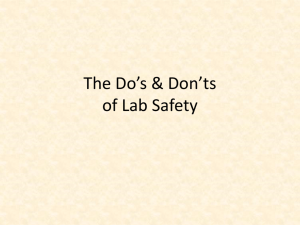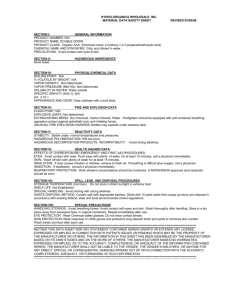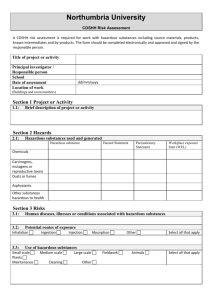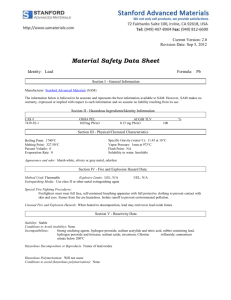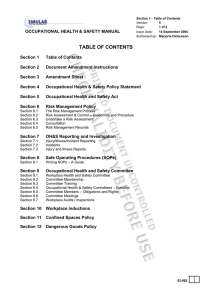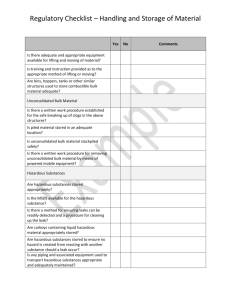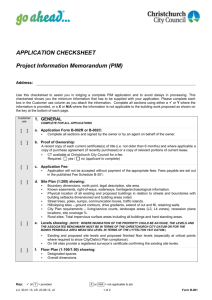Safety in Workshops - University of Warwick
advertisement
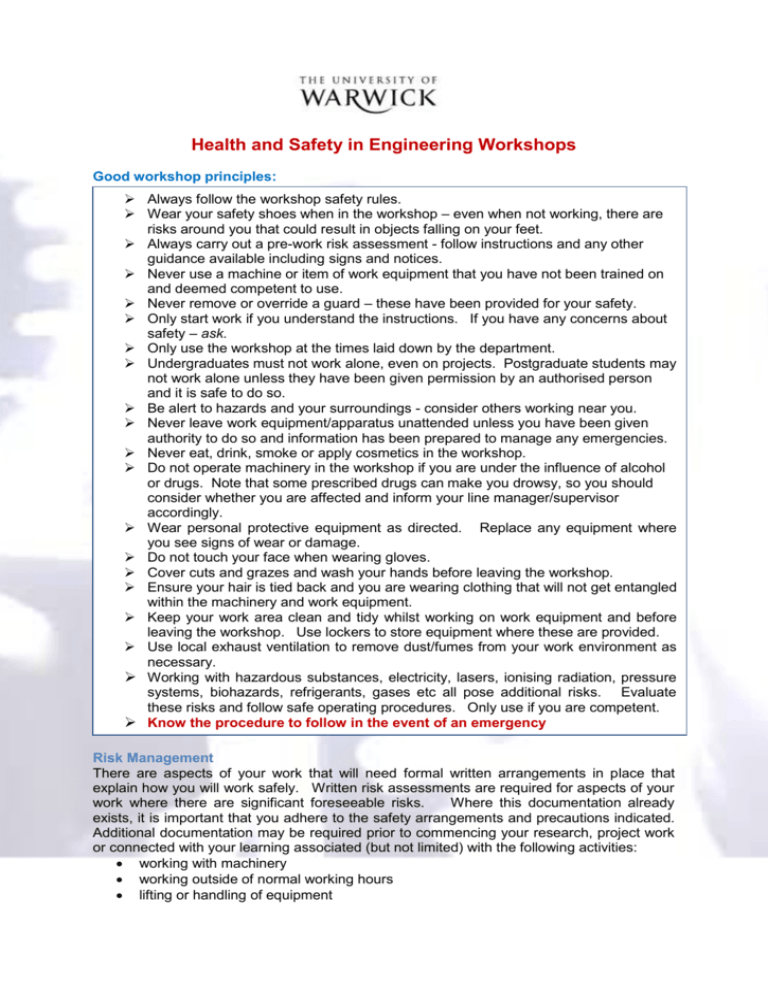
Health and Safety in Engineering Workshops Good workshop principles: Always follow the workshop safety rules. Wear your safety shoes when in the workshop – even when not working, there are risks around you that could result in objects falling on your feet. Always carry out a pre-work risk assessment - follow instructions and any other guidance available including signs and notices. Never use a machine or item of work equipment that you have not been trained on and deemed competent to use. Never remove or override a guard – these have been provided for your safety. Only start work if you understand the instructions. If you have any concerns about safety – ask. Only use the workshop at the times laid down by the department. Undergraduates must not work alone, even on projects. Postgraduate students may not work alone unless they have been given permission by an authorised person and it is safe to do so. Be alert to hazards and your surroundings - consider others working near you. Never leave work equipment/apparatus unattended unless you have been given authority to do so and information has been prepared to manage any emergencies. Never eat, drink, smoke or apply cosmetics in the workshop. Do not operate machinery in the workshop if you are under the influence of alcohol or drugs. Note that some prescribed drugs can make you drowsy, so you should consider whether you are affected and inform your line manager/supervisor accordingly. Wear personal protective equipment as directed. Replace any equipment where you see signs of wear or damage. Do not touch your face when wearing gloves. Cover cuts and grazes and wash your hands before leaving the workshop. Ensure your hair is tied back and you are wearing clothing that will not get entangled within the machinery and work equipment. Keep your work area clean and tidy whilst working on work equipment and before leaving the workshop. Use lockers to store equipment where these are provided. Use local exhaust ventilation to remove dust/fumes from your work environment as necessary. Working with hazardous substances, electricity, lasers, ionising radiation, pressure systems, biohazards, refrigerants, gases etc all pose additional risks. Evaluate these risks and follow safe operating procedures. Only use if you are competent. Know the procedure to follow in the event of an emergency Risk Management There are aspects of your work that will need formal written arrangements in place that explain how you will work safely. Written risk assessments are required for aspects of your work where there are significant foreseeable risks. Where this documentation already exists, it is important that you adhere to the safety arrangements and precautions indicated. Additional documentation may be required prior to commencing your research, project work or connected with your learning associated (but not limited) with the following activities: working with machinery working outside of normal working hours lifting or handling of equipment working with hazardous substances, or where your work may introduce foreseeable risks to yourself or others by virtue of what you are doing or where you are doing it. There is no problem with using previously written risk assessments providing these cover the activities that you are doing and satisfactorily mitigate the risks. Where your work falls outside of these however, you will need to demonstrate how you will manage these risks in addition to what has been considered previously. Waste Management Ensure waste materials are disposed of in the correct way and in the correct location. • Swarf must be regularly removed to the bins provided. Waste solvents, batteries, oils, cutting fluids, greases, certain adhesives etc must all be disposed of as hazardous waste and taken to the relevant area for their safe disposal. All hazardous waste must be accompanied by Material Safety Data Sheets and be clearly labelled. • Never wash substances down the sink unless you have been instructed to do so. • Empty gas cylinders must be stored separate from full cylinders. Emergency Action Spillages • Report oily/slippery floors, spills, breakages and escapes of fumes/substances immediately to the technician or demonstrator. • Make safe by cordoning off the area if possible. Do not attempt to clean up the material unless you know that it is safe to do so, or if told to do so. • Follow local emergency procedures in place where these exist. First Aid • For all accidents involving injury or contact with a hazardous substance, seek first aid and ensure the incident is reported. • If a material/substance enters the eyes – use eye wash immediately to irrigate the eye. Do not rub. • If a substance has been swallowed, drink a glass of water – do not induce vomiting First Aiders are located across the University and should be available during normal working hours. Should you require first aid outside of these times, assistance should be summoned via Security on x22222 or in an emergency, dial x(9)999 for external emergency services. Fire • Shout ‘Fire’ and activate the fire alarm • Shut down machine if safe to do so and leave by the nearest exit • Where possible ensure others around you vacate the building with you • Do not take risks and never use lifts • Go to the designated assembly area • Do not re-enter building until told it is safe Occupational Health If you have concerns about the impact of your work on your health or you have a pre-existing medical condition that you believe could be made worse by your work or environment, report it to your supervisor or directly with our Occupational Health Services. Further information Further information on Health and Safety in Engineering can be found via http://www2.warwick.ac.uk/fac/sci/eng/local/hands/. These pages will also link you back to the main Health and Safety web-pages for the University, where additional information including occupational health related information can be found. The Health and Safety Executive website www.hse.gov.uk is another valuable resource.
